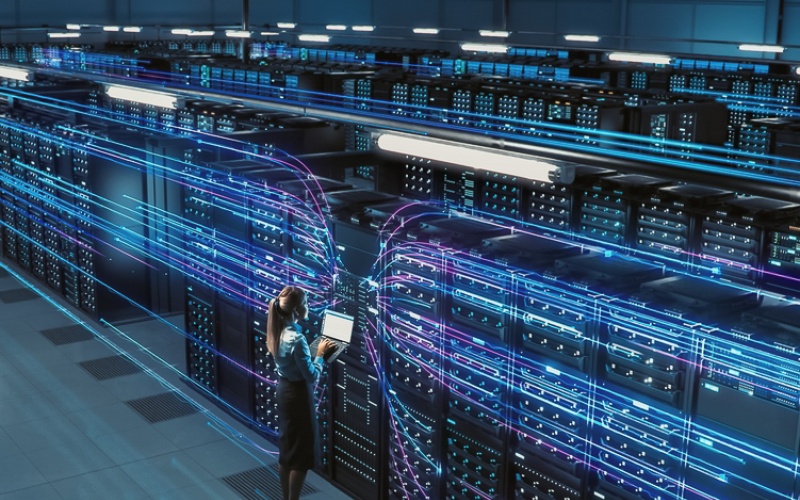
Artificial Intelligence (AI) is central to breakthroughs that are making the energy sector more efficient by driving improvements in digital twin technology or powering generative AI (GenAI) systems, such as ChatGPT, for example. However, the data centres and other infrastructure needed to handle the extra processing power and storage required are significant contributors to growing energy demand too – an issue highlighted by the International Energy Agency (IEA) in its 2024 report on the global electricity sector.
The IEA forecasts that electricity consumption from data centres, AI and the cryptocurrency sector could double by 2026 and says data centres are now significant drivers of growth in electricity demand in many regions.
Total electricity consumption from data centres globally could reach more than 1 000 terawatt-hours (TWh) in 2026, compared to an estimated 460 TWh in 2022. The IEA points out that this 2026 estimate is roughly equivalent to the annual electricity consumption of Japan. The agency says updated regulations and technological improvements in efficiency and other areas will be crucial to moderate the surge in energy consumption from data centres.
This surge in demand for computer processing power is being accompanied by an uptick in energy demand elsewhere, as economies globally recover after the Covid Pandemic. The IEA says global electricity demand is expected to rise faster than recently, growing by an average of 3.4% a year until 2026 – and it says the world is going to need a lot more electricity to replace fossil fuels in the overall energy mix if global net zero targets are to be met.
In the IEA’s Net Zero Emissions by 2050 Scenario, which aligns limiting global warming to 1.5°C, electricity’s share in global final energy consumption would need to be close to 30% in 2030, compared to an estimated 20% in 2023.
BP CEO sees crucial role for gas producers
Leaders of some gas producers see the challenge of scaling up electricity output, not as a reason to scale down production, but rather as a reason to prepare for increasing demand for their product. They believe gas-fired power generation will be essential for decades if the world is to produce enough electricity to meet global requirements.
Murray Auchincloss, BP’s new CEO, was quick to highlight this possibility when commenting on the company’s outlook during a quarterly results presentation in February. He said gas production may fall slightly during the 2020s but then ”grow significantly” during following decades.
“Demand for natural gas coupled with solar and battery technology continues to grow and grow and grow. We're seeing some really big demand coming out, especially from cloud providers, who have GenAI,” Auchincloss said on a call with analysts. “I think we're going to need every little bit of renewables and natural gas we possibly can to help power… world systems given that expansive demand inside GenAI.”
BP said in November that it would be increasing its use of generative AI, by adopting Copilot for Microsoft 365, a cloud-based service that uses artificial intelligence and natural language processing to automate a variety of daily tasks such as writing emails and managing inboxes. BP expects the move to help employees to boost productivity, upskill, enhance business performance and support innovation.

